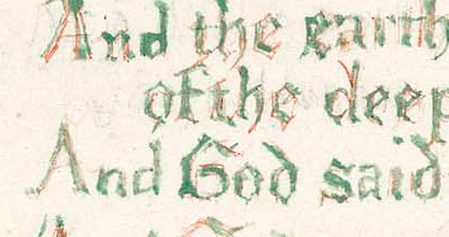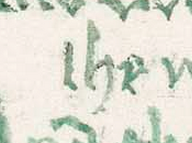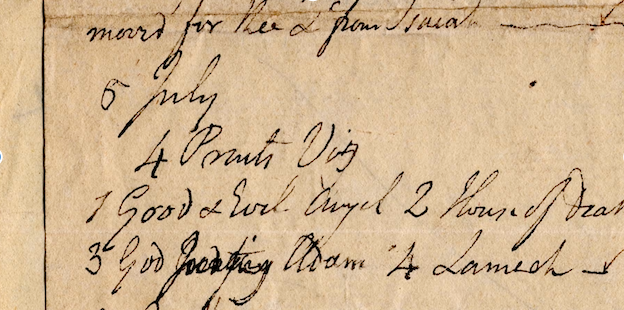I’ve been proofreading the Genesis manuscript (for longer than I’d like to admit), and surprisingly, I’m finding myself implementing a really basic rule of the archive for more or less the first time. The only other handwritten works I’ve ever proofed or transcribed were all letters. Since letters are basically one of a kind, and there are few guideposts besides common sense to indicate what Blake is saying most of the time, if a word or a letter looks funky, I transcribe it funkily. The “transcribe what you see” rule is very straightforward in these cases.
However, for a work like Genesis, this rule is supplemented by an ongoing consciousness that since Blake is writing by hand, everything he means is not going to be executed perfectly. For example, the row of indentations for each line down the page might look wildly variant, but basically, we get the picture, and though Blake may have been drunk that day or something, we understand that the indentation of each line should be represented by one “tab” space, and we represent it as such. Here are a couple examples of what I’m talking about from Genesis

Obj. 3 line 6: It looks like there’s a space missing between “of” and “the”. Should we transcribe “ofthe deep”? No, because we can see that these are two separate words, and what’s more, we’d have to transcribe two words as one in almost every sentence throughout the work.

Obj. 4 line 9: Here again, this “t” is missing its cross; should we transcribe it as ambiguous/ as an “i,” or note it? No, because the number of “t”’s missing their crosses might actually outnumber those with crosses. Wait, does Blake even know what a lower-case “t” looks like?! I think I have my dissertation project!!!
Hopefully I won’t go mad with the power this proofing project is affording me before I finish it, but at this rate….
—

